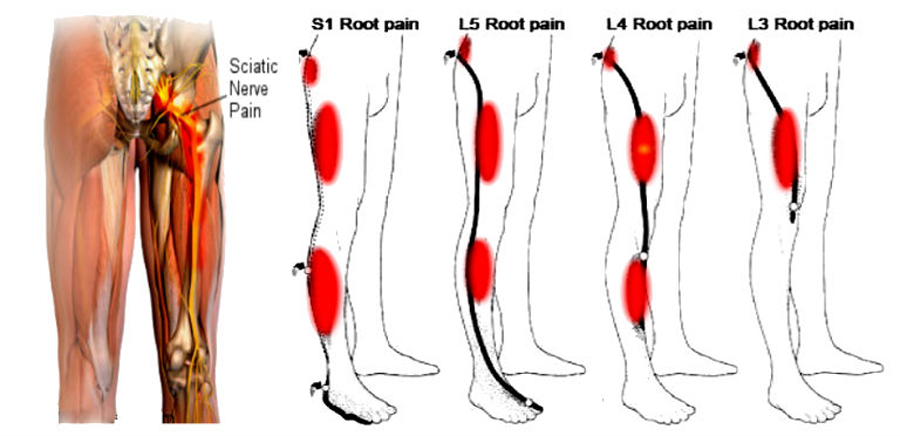Clinical Classification in Low Back Pain: Best-evidence Diagnostic Rules Based on Systematic Reviews
SOURCE: BMC Musculoskelet Disord. 2017 (May 12); 18 (1): 188
Tom Petersen, Mark Laslett and
Carsten Juhl
Back Center Copenhagen,
Mimersgade 41, 2200,
Copenhagen N, Denmark.
A clinical decision rule “is a clinical tool that quantifies the individual contributions that various components of the history, physical examination, and basic laboratory results make toward the diagnosis, prognosis, or likely response to treatment in a patient. Clinical decision rules attempt to formally test, simplify, and increase the accuracy of clinicians’ diagnostic and prognostic assessments” [23].This is probably the best and most comprehensive review you will read this year, as it drills down into the findings and treatment of:
Take the time and enjoy this extensive review |
BACKGROUND: Clinical examination findings are used in primary care to give an initial diagnosis to patients with low back pain and related leg symptoms. The purpose of this study was to develop best evidence Clinical Diagnostic Rules (CDR] for the identification of the most common patho-anatomical disorders in the lumbar spine; i.e. intervertebral discs, sacroiliac joints, facet joints, bone, muscles, nerve roots, muscles, peripheral nerve tissue, and central nervous system sensitization.
METHODS: A sensitive electronic search strategy using MEDLINE, EMBASE and CINAHL databases was combined with hand searching and citation tracking to identify eligible studies. Criteria for inclusion were: persons with low back pain with or without related leg symptoms, history or physical examination findings suitable for use in primary care, comparison with acceptable reference standards, and statistical reporting permitting calculation of diagnostic value. Quality assessments were made independently by two reviewers using the Quality Assessment of Diagnostic Accuracy Studies tool. Clinical examination findings that were investigated by at least two studies were included and results that met our predefined threshold of positive likelihood ratio ≥ 2 or negative likelihood ratio ≤ 0.5 were considered for the CDR.
RESULTS: Sixty-four studies satisfied our eligible criteria. We were able to construct promising CDRs for symptomatic intervertebral disc, sacroiliac joint, spondylolisthesis, disc herniation with nerve root involvement, and spinal stenosis. Single clinical test appear not to be as useful as clusters of tests that are more closely in line with clinical decision making.
There are more articles like this @ our:
Clinical Prediction Rule Page and the:
CONCLUSIONS: This is the first comprehensive systematic review of diagnostic accuracy studies that evaluate clinical examination findings for their ability to identify the most common patho-anatomical disorders in the lumbar spine. In some diagnostic categories we have sufficient evidence to recommend a CDR. In others, we have only preliminary evidence that needs testing in future studies. Most findings were tested in secondary or tertiary care. Thus, the accuracy of the findings in a primary care setting has yet to be confirmed.
KEYWORDS: Clinical decision making; Clinical examination; Diagnostic accuracy; Low back pain classification; Sensitivity and specificity
From the FULL TEXT Article:
Background
Identifying diagnostic, prognostic and treatment orientated subgroups of patients with low back pain (LBP] has been on the research agenda for many years [1, 2]. Diagnostic reasoning with a structural/pathoanatomical focus is common among clinicians [3], and it is regarded as an essential component of the biopsychosocial model [4–6]. Within this model, emphasis has been on the role of psychosocial considerations and how these factors can interfere with recovery. Indeed, there is good quality evidence for the predictive value of a set of psychosocial factors for poorer outcome in patients with LBP [7, 8]. These factors are multifactorial, interrelated, and only weakly associated to the development and prognosis of LBP [9], which might be one of the explanations why effects of treatments targeting those risk factors has been reported to be small, mostly short term, and there was little evidence that psychosocial treatments were superior to other active treatments [7, 10].
Maybe it is time to swing the pendulum towards the “bio” in the biopsychosocial model. There are many examples in medicine where the pathology has been identified prior to any effective treatments being developed making it an ongoing challenge to generate new diagnostic knowledge on which to base more effective treatment strategies in the future. Alongside clinicians, many researchers within the field of LBP feel that choosing the most effective treatment for the individual patient is not possible without better understanding of the biological component of the biopsychosocial model [4].
In 2003 the present authors suggested a diagnostic LBP classification system based on a review of the literature [11, 12]. This system has been fully or partly used in prognostic and outcome studies by other research groups [13–15]. The present study is driven by the obvious need for an update based on recent evidence. The relevance of an updated diagnostic classification is as follows:
First, diagnostic patterns of signs and symptoms from history and physical examination may assist the clinician in explaining the origin of pain to the patient and in directing treatment at the painful structure. Patients with persistent LBP often have misconceptions about what is going on [16], and may have been given all sorts of speculative explanations for their symptoms resulting in anxiety and confusion. These patients often seek an explanation about what is wrong [17], and new evidence suggests that offering clear explanations and information about aetiology, prognosis and interventions may improve patient outcomes [7]. Giving an explanation based on best evidence may contribute to
1) reducing the patient’s confusion and conceptual chaos, 2) reassurance that the clinician knows what is going on,3) visualizing the potential benefit of treatment directed at the painful structure (mental imagery has been suggested to have potential in pain management [18, 19],
4) provided that the above efforts are successful, motivating the patient to open a therapeutic window.
Second, the need for studies testing the effect of treatment strategies for subgroups of patients with LBP in primary care has been emphasized in consensus-papers [1, 20] as well as current European guidelines [21]. Targeting treatment to classifications merely based on prognostic patient characteristics has not been convincingly successful in finding treatment modalities that are more beneficial than others [22]. A diagnostic classification may assist in generating hypotheses as to which treatment modalities are more likely to target the pain source for future testing in randomized trials.
Finally, an evidence-based clinical diagnosis with acceptable accuracy will reduce the need for invasive or expensive diagnostic methods (often with substantial waiting time and expense).
The focus of this review is to outline the diagnostic value of signs and symptoms for use in primary care without access to confirmatory paraclinical methods. The clinician must not mislead the patient, so it is important to distinguish between diagnostic labels that can be given to patients with reasonable confidence and those only suggesting suspected best evidence patho-anatomy. Therefore, it is of interest to identify signs and symptoms with the potential to diagnose common sources and causes of LBP i.e. intervertebral discs, sacroiliac joints, facet joints, bones, nerve roots, muscles, peripheral nerve tissue, and central nervous system sensitization.
Read the rest of this Full Text article now!




Leave A Comment